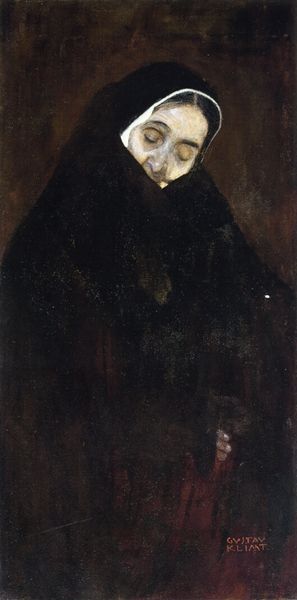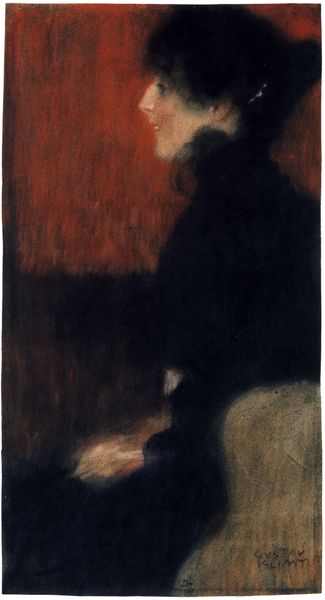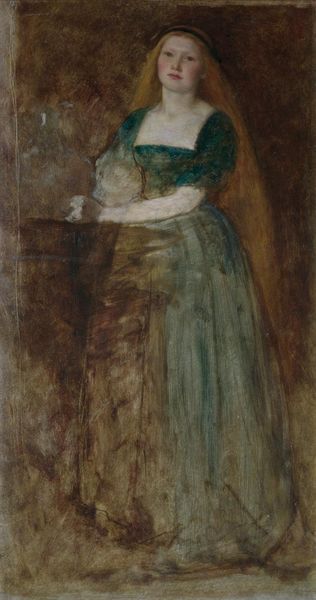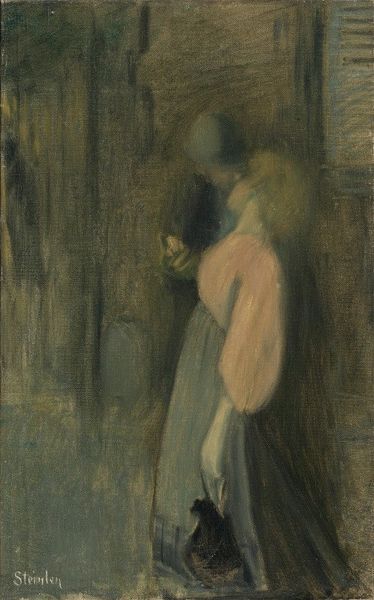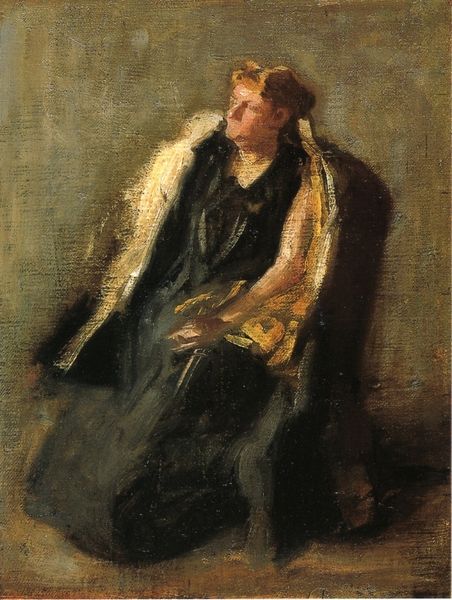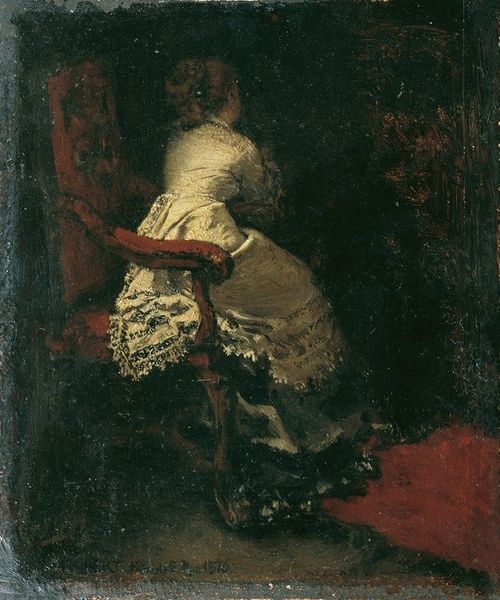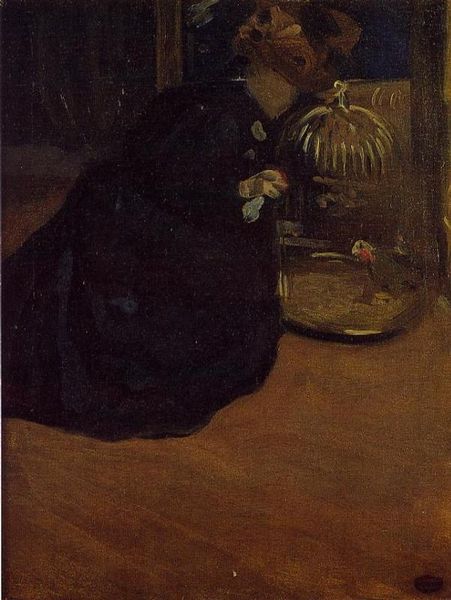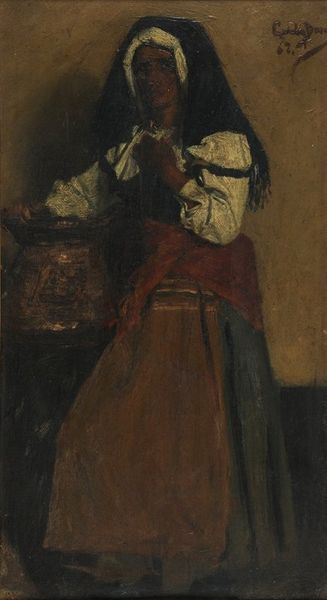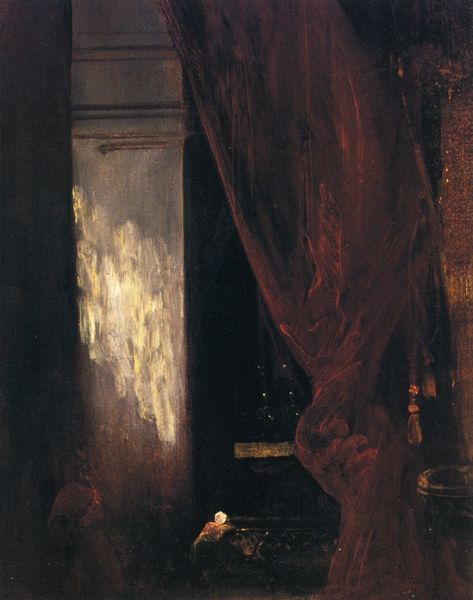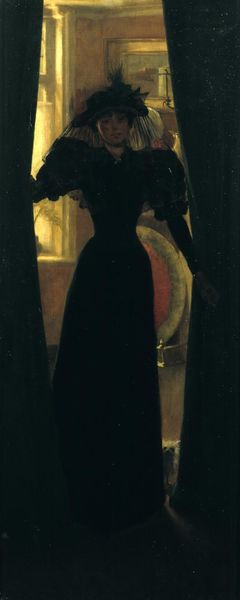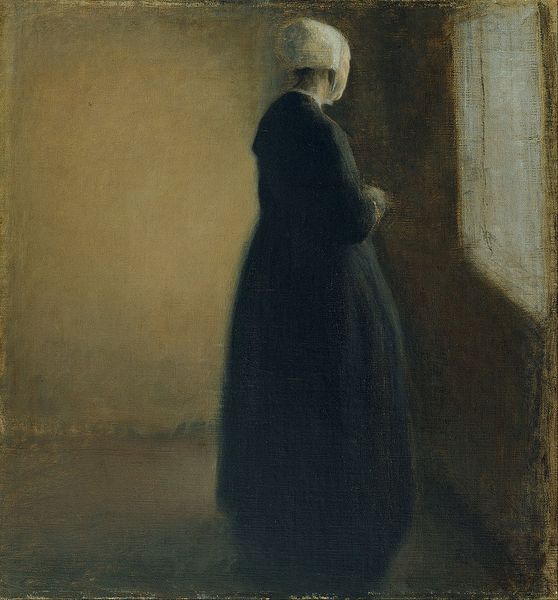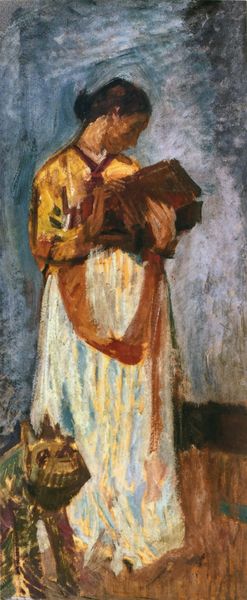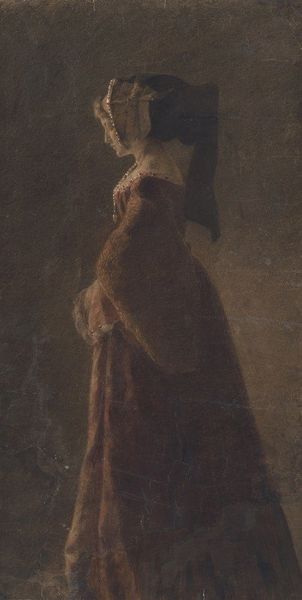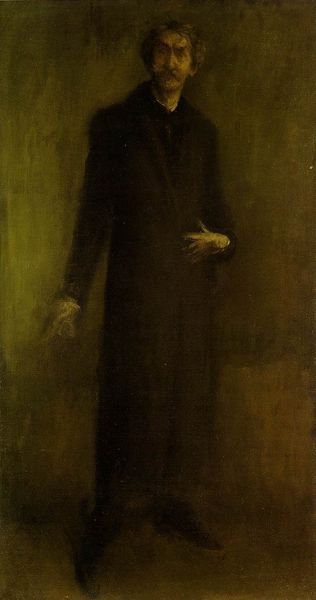
Dimensions: 218.44 x 110.49 cm
Copyright: Public domain
Editor: This is Whistler’s "Arrangement in Black: The Lady in the Yellow Buskin" from 1883. It’s an oil painting, a full-length portrait… The somber palette gives it a rather melancholy feel, almost like a study in contrasts. What do you see in this piece? Curator: I'm immediately drawn to the way Whistler manipulates materials here. Look at the visible brushstrokes, how the pigment is applied so thinly in some areas, allowing the texture of the canvas to show through. It disrupts the traditional hierarchies separating “fine art” from craft or the supposed rawness of "preparatory" sketches. The production of the canvas itself is interesting here, the texture interacts directly with the painting.. Editor: I see what you mean. The way the black almost dissolves into the background feels deliberate, like he's emphasizing the materiality of the paint rather than aiming for strict realism. Curator: Precisely. And think about the labor involved: the sourcing and grinding of pigments, the preparation of the canvas, the repetitive act of applying brushstroke after brushstroke. This was a conscious effort to showcase the constructed nature of painting, rejecting the illusionism valued by some of his contemporaries. The “Lady's” fashion itself—how might that allude to larger forces of material consumption and textile production within Victorian society? Editor: That's a really interesting point. It makes you wonder about the societal pressures and economic realities shaping the image. Is she a consumer or also caught up in production herself? Curator: Exactly. Consider too how Whistler challenged traditional exhibition spaces and curatorial practices. How do you imagine the physical exhibition of such paintings influenced public perceptions of art? Editor: Wow, thinking about the painting as a product of labor and a comment on the art world… it gives the portrait so much more depth. I’ll never look at a Whistler the same way! Curator: Indeed! The power in art often lies not just in what is represented, but in *how* it is made and *why*.
Comments
No comments
Be the first to comment and join the conversation on the ultimate creative platform.
